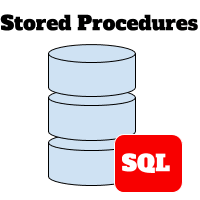In the vast landscape of relational databases, Stored Procedures stand as stalwart guardians of efficiency and functionality. This comprehensive blog post aims to demystify the concept, exploring what stored procedures are, why they are essential, and the purposes they serve, accompanied by real-world examples with MS SQL snippets.
Understanding Stored Procedures
Definition and PurposeStored Procedures are precompiled and stored sets of SQL statements that can be executed as a single unit. They serve as reusable and optimized code blocks, enhancing performance, security, and maintenance in database operations.
Why We Need Stored Procedures
Efficiency and SecurityPerformance Optimization: Stored procedures are precompiled and stored in the database, reducing the overhead of parsing and optimizing SQL statements during execution.
Code Reusability: As modular units of code, stored procedures promote code reusability. Changes made to a stored procedure automatically reflect in all places where it is invoked.
Enhanced Security: Permissions can be granted to users on stored procedures, restricting direct access to underlying tables. This adds an additional layer of security to the database.
Real-World Example: Order Processing System
Consider an order processing system where multiple operations are performed on the Orders table. Instead of embedding SQL statements in various application layers, a stored procedure named CreateOrder encapsulates the logic for creating a new order.CREATE PROCEDURE CreateOrder @CustomerID INT, @ProductID INT, @Quantity INT AS BEGIN -- Validate customer and product IDs IF EXISTS (SELECT 1 FROM Customers WHERE CustomerID = @CustomerID) AND EXISTS (SELECT 1 FROM Products WHERE ProductID = @ProductID) BEGIN -- Insert new order INSERT INTO Orders (CustomerID, ProductID, Quantity, OrderDate) VALUES (@CustomerID, @ProductID, @Quantity, GETDATE()); -- Update product quantity in stock UPDATE Products SET QuantityInStock = QuantityInStock - @Quantity WHERE ProductID = @ProductID; -- Additional logic if needed PRINT 'Order created successfully.'; END ELSE BEGIN PRINT 'Invalid customer or product ID.'; END END;In this example, the CreateOrder stored procedure encapsulates the logic for creating a new order, validating customer and product IDs, updating the order, and performing additional actions. This consolidated approach enhances maintainability and security.
Executing Stored Procedures
Invocation and ParametersStored procedures are executed using the EXEC statement, and parameters can be passed to them.
-- Execute the CreateOrder stored procedure EXEC CreateOrder @CustomerID = 101, @ProductID = 202, @Quantity = 3;
Conclusion
In the symphony of database management, Stored Procedures act as virtuoso conductors, orchestrating efficient, secure, and maintainable database operations. Whether optimizing performance, promoting code reusability, or enhancing security, stored procedures offer a powerful mechanism for streamlining SQL logic.As you delve into the world of Stored Procedures, envision them as modular units of efficiency, seamlessly integrating with database systems to elevate the overall performance and maintainability of your applications.
Happy Querying!

Comments
Post a Comment